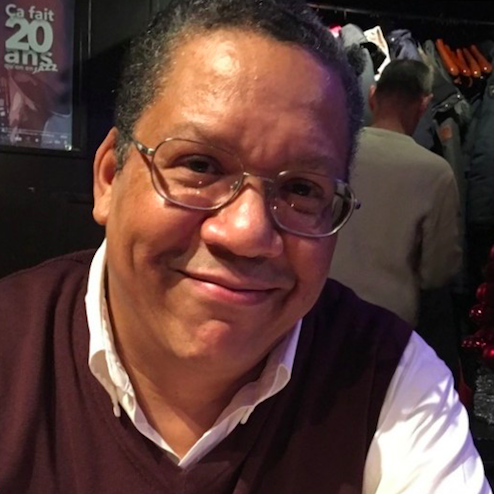
A young woman with autism and other learning disabilities using a laptop for remote learning.
Although 90 percent of U.S.-based companies claim to prioritize diversity, equity and inclusion (DEI), only 4 percent consider disability as part of those initiatives. With more than 1 billion people globally living with a disability, that’s a costly disconnect, argues Dannie Lynn Fountain, an author, DEI expert and human resources staffer at Google.
“Companies are incentivized by financial outcomes, and research shows that the more diverse a workforce is, the more innovative the ideas are, the better the financial outcomes are for the company,” Fountain told TriplePundit. “Plain and simple, it makes business sense.”
For employees, increased diversity helps generate a more positive and productive workplace. “If you only have one employee who identifies as a particular marginalized identity, there's a tremendous amount of tokenization and burden that happens for that employee,” Fountain said. “By having a good cohort of individuals who come from each marginalized background, there’s a sense of community that gets created, there’s better employee engagement and there’s likely to be higher retention.”
Fountain’s latest book, Ending Checkbox Diversity: Rewriting the Story of Performative Allyship in Corporate America, explores the absence of disability in diversity priorities and how businesses can better support people with disabilities.
“Performative allyship,” Fountain told TriplePundit, is when companies and individuals support or seek to ally themselves with marginalized identities “purely for the way it appears, purely for the performance of it.”
From Fountain’s perspective, announcing diversity programs or internal resources for people with disabilities isn’t going far enough.
“It can be a company having a disability employee resource group or having a program specifically for higher autistic individuals or something like that, but their interview processes are not inclusive and their accommodation process requires more documentation than the [Americans with Disabilities Act] actually legally requires,” she added.
Companies looking to attract people with disabilities can start by reexamining their outreach to potential job candidates, Fountain advised. “So many organizations, when they get an application in or even when they are cold sourcing for candidates, the first step is to jump on the phone with the recruiter, let's have a quick 15-minute chat,” she said. “First of all, even if you're not neurodiverse, if you're introverted, if you get nervous, if you get anxious, that phone call isn't going to be the best way to sell yourself.”
It’s better to offer different ways to engage, she said, perhaps by sharing a few questions by email that candidates can reply to, or simply asking the candidates to share a little bit about themselves. “Basically, offering anything other than the default, 15-minute phone call is a great start,” Fountain explained.
Current interview processes are biased toward candidates who can think on their feet, quickly synthesize information, and provide a well-thought-out response within 30 to 60 seconds of hearing a question, she claimed. “There’s nothing wrong with that," she said. "There certainly is something to be said for the talent of being able to synthesize data quickly and articulate a response."
However, the majority of neurodiverse candidates are not able to highlight their best selves in a setting like that. Providing those initial questions in advance helps neurodiverse candidates present themselves better. Follow-up questions will also help to determine whether a candidate got improper assistance help or cheated, Fountain noted.
Whatever the setting in which she speaks or is making a presentation, Fountain makes a point of revealing her contributing identities as a queer, plus-sized Latina with ADHD to underscore that hers is not the perspective of a straight, white, neurotypical person. “I find myself often in conversations where people are unaware of the marginalized identities I hold and they say things that, were they aware of those identities, they probably would have kept in their minds instead of speaking out loud,” she said.
She considers how and when in the conversation she reveals her identities to allow for things to be said “to actually uncover what's really going on.”
“When I speak up, there is often an assumption that I'm speaking from the perspective of an ally,” she told us. “Allyship is powerful. Allyship is phenomenal, but companies, unfortunately, often don't value an ally voice as much as they do the actual marginalized person’s voice.”
Revealing her contributing identities forces people to listen to what she’s saying more closely, because she’s just said, ‘Hey, I hold this identity, fight me,” which she told us puts more weight behind what she is saying.
Fountain recognizes that how and when someone reveals their identities is a difficult, highly personal decision that weighs how much someone knows about a company, what they think the reaction might be, and how much of someone’s invisible marginalized identity will show in the interview process or at work.
Depending upon where someone lives and the industry they work in, they may choose not to disclose invisible marginalized identities for the sake of getting a job, Fountain said. Then they have to decide, once they’ve been hired, whether to identify them.
“If, for example, it’s ADHD or autism or chronic illness, are you factoring in how your performance is going to be measured without the knowledge of how you’re actually starting four steps behind everyone,” Fountain explained. “That individual choice has economic considerations, mental health considerations, because the reality is, at the end of the day, we all need a job. We all need money to live.”
Image credit: Alexander Grey via Unsplash

Gary E. Frank is a writer with more than 30 years of experience encompassing journalism, marketing, media relations, speech writing, university communications and corporate communications.














